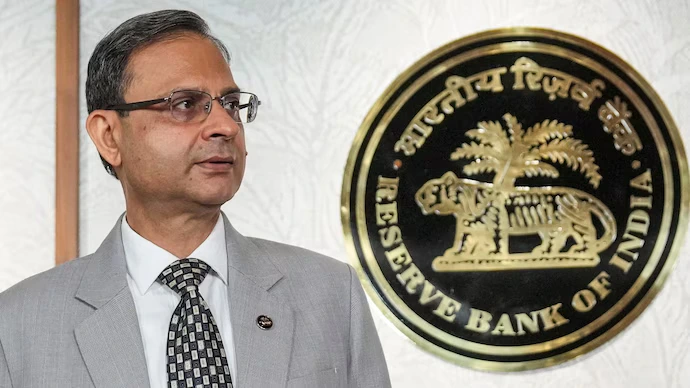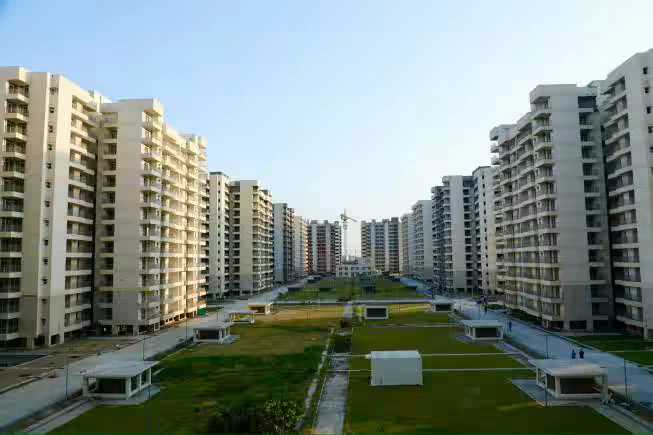Table of Content
India’s office real estate market continued its steady growth in 2025, recording 56.8 million sq ft of gross office space absorption between January and September, according to a new report by Savills India. Despite global economic challenges and a cautious corporate spending environment, the country’s commercial leasing activity remained strong, driven by technology firms, Global Capability Centres (GCCs), BFSI companies, and flexible workspace operators.
With sustained momentum in key metro cities and a 9.6% YoY increase in new supply, India’s office space sector is now poised to cross 75 million sq ft of annual absorption by year-end setting a new benchmark for the industry.
Resilient Growth Amid Global Headwinds
The India office space market has shown remarkable resilience despite persistent global uncertainty. Companies continue to view India as a strategic growth hub, supported by a large talent base, cost advantage, and an expanding technology ecosystem.
According to Naveen Nandwani, Managing Director, Commercial Advisory & Transactions at Savills India, the sustained leasing momentum reflects India’s structural strengths. “Even with macroeconomic challenges in developed markets, India remains an attractive destination for global occupiers seeking scalability and cost efficiency,” he said.
This steady demand from multinational and domestic firms underscores how India’s office absorption has normalized post-pandemic, with occupiers focusing on long-term expansion and consolidation strategies rather than short-term cost optimization.
Also Read: India’s Retail REIT Market Likely to Touch ₹60,000–80,000 Crore by 2030
City-Wise Performance: Delhi-NCR Leads Q3; Bengaluru Tops YTD Leasing
During Q3 2025, India recorded 17.9 million sq ft of office leasing a 24% YoY dip from the same quarter last year due to a high base in H1. Yet, leasing activity remained broad-based across cities, driven by sustained occupier confidence.
- Delhi-NCR led the quarter with 5 million sq ft of leasing, supported by large IT-BPM and co-working transactions.
- Bengaluru followed with 3.9 million sq ft, anchored by tech occupiers and flexible workspace providers.
- Pune recorded 2.8 million sq ft, largely from GCC and R&D-driven demand.
For the January–September 2025 period, Bengaluru continued to dominate with 14.6 million sq ft, accounting for 26% of total absorption. Delhi-NCR followed at 11.8 million sq ft, while Mumbai saw 9.1 million sq ft, led by strong BFSI demand.
Hyderabad absorbed 7.5 million sq ft, driven by mid-sized GCC transactions, and both Pune and Chennai maintained steady activity at 6.9 million sq ft each.
This city-wise distribution highlights how India’s top six metros remain the backbone of the India office space market, each supported by distinct sectoral strengths from technology in Bengaluru to financial services in Mumbai and co-working in NCR.
Supply Trends: 10% YoY Growth, Strong Pipeline in Bengaluru and NCR
On the supply side, India saw 35.4 million sq ft of new completions during the first nine months of 2025, marking a 9.6% year-on-year rise. The development pipeline remains robust, with developers responding to strong pre-leasing activity and demand for high-quality, sustainable office assets.
City-level completions were led by Bengaluru (11.1 mn sq ft) and Delhi-NCR (5.7 mn sq ft), together accounting for nearly 60% of total supply. Other major contributors included Pune (8.8 mn sq ft), Chennai (4 mn sq ft), Hyderabad (3.8 mn sq ft), and Mumbai (1.9 mn sq ft).
Notably, Bengaluru continues to hold the largest Grade A office stock at 246.6 million sq ft, followed by Delhi-NCR (150.8 million sq ft) and Hyderabad (133.5 million sq ft). The sustained increase in quality office stock reflects both developer confidence and occupier preference for integrated business districts with strong infrastructure and amenities.
Leasing Drivers: GCCs and Large-Scale Deals Dominate
A mix of large-scale transactions and GCC expansions has shaped the leasing landscape in 2025. Deals exceeding 100,000 sq ft accounted for 42% of total transactions during Q3, indicating steady demand from corporates consolidating their India operations.
Global Capability Centres (GCCs) remained one of the most influential demand drivers, comprising 30% of total leasing (5.9 million sq ft) between January and September. Bengaluru, Pune, and Hyderabad were the top GCC destinations, with many firms expanding in business parks offering advanced infrastructure and long-term lease flexibility.
From a sectoral standpoint:
- Technology firms contributed 33% of overall demand.
- Flexible workspaces accounted for 15%, reflecting ongoing hybrid work adoption.
- BFSI followed with 13%, particularly strong in Mumbai and Gurugram.
Corporates continue to favor Grade A office space in well-connected micro-markets, seeking energy-efficient buildings and collaborative layouts that align with evolving work models.
Market Outlook: On Track for a Record-Breaking Year
With the final quarter still ahead, Savills India projects that the country’s office absorption could touch or exceed 75 million sq ft in 2025 surpassing the previous all-time high.
The report highlights healthy pre-leasing levels, strong demand from GCCs, and the ongoing flight to quality as companies upgrade to better buildings in prime locations. Additionally, developers are prioritizing green-certified projects, wellness-focused designs, and tenant experience enhancements, reflecting global occupier expectations.
Experts believe India’s office space market is structurally positioned for sustained growth, underpinned by favorable demographics, affordability, and the continued expansion of tech-driven industries.
“India’s office demand is no longer cyclical it’s strategic,” the report notes. “As global corporates diversify their footprints, India’s combination of scalability, stability, and skill depth gives it a long-term edge.”
Also Read: Housing Sales Dip 1% in Q3 2025 Across India, MMR and Pune Hit the Hardest
Conclusion
The first nine months of 2025 have reaffirmed India’s emergence as one of the most resilient and fast-evolving office markets globally. With record absorption levels, stable vacancy rates, and robust supply addition, the India office space sector continues to attract both occupiers and investors alike.
Looking ahead, the momentum is expected to remain firm, powered by GCC growth, IT sector resilience, and flexible workspace expansion. As India cements its position as a global back-office and innovation hub, 2025 could well mark the beginning of a new growth cycle for the country’s commercial real estate market.







Ans 1. Between January and September 2025, India recorded 56.8 million sq ft of gross office space absorption, according to Savills India. The year is projected to end with over 75 million sq ft, setting a new record for the sector.
Ans 2. Bengaluru led the charts with 14.6 million sq ft, followed by Delhi-NCR at 11.8 million sq ft, and Mumbai at 9.1 million sq ft. Hyderabad, Pune, and Chennai also showed steady demand from GCCs and IT firms.
Ans 3. The technology sector remains the largest contributor, followed by Global Capability Centres (GCCs), BFSI companies, and flexible workspace operators. Together, they account for nearly two-thirds of total leasing in 2025.
Ans 4. India added around 35.4 million sq ft of new Grade A office supply during the first nine months of 2025, showing a 9.6% YoY increase. Bengaluru and Delhi-NCR accounted for the majority of completions.
Ans 5. GCCs have become key occupiers, contributing about 30% of total leasing this year. Their expansion across cities like Bengaluru, Hyderabad, and Pune reflects India’s growing role as a global talent and innovation hub.
Ans 6. Flexible workspaces now make up 15% of total leasing, with corporates increasingly adopting hybrid work models. Operators are expanding in prime micro-markets across Bengaluru, NCR, and Mumbai.
Ans 7. Experts expect sustained growth driven by GCC expansions, tech sector hiring, and flight-to-quality leasing trends. Developers are also focusing on green-certified and experience-driven office spaces to attract global tenants.
Ans 8. Despite global economic headwinds, India continues to attract multinational occupiers due to its cost efficiency, skilled workforce, scalability, and favorable business ecosystem, making it one of the world’s most stable office destinations.